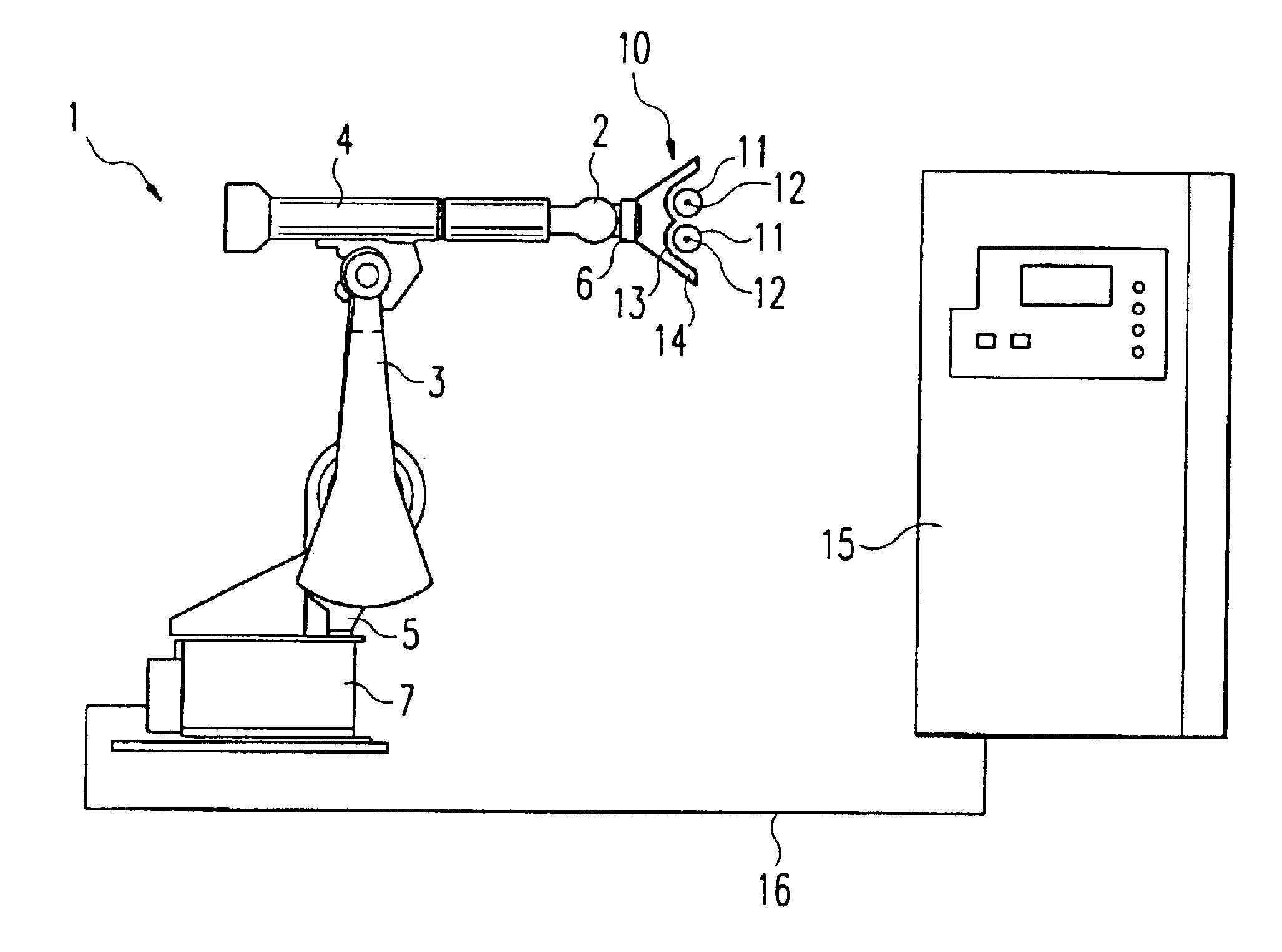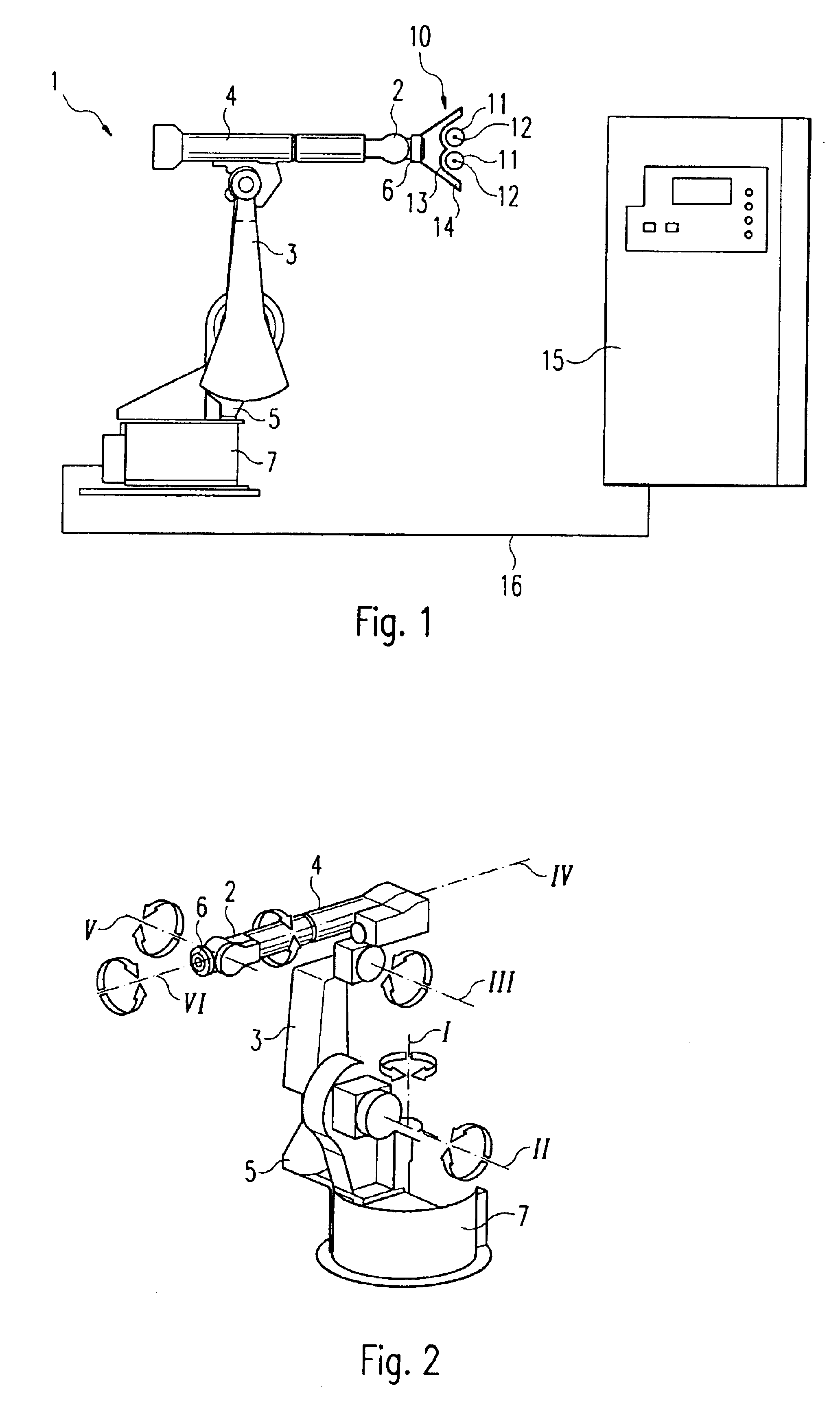Infrared irradiation
a technology of infrared radiation and irradiation chamber, which is applied in the field of infrared radiation, can solve the problems of large areas of the surface of objects, or even the object as a whole, being unavoidably heated, and it is impossible to begin to dry or fix the applied materials, and achieves the effect of short irradiation times
- Summary
- Abstract
- Description
- Claims
- Application Information
AI Technical Summary
Benefits of technology
Problems solved by technology
Method used
Image
Examples
Embodiment Construction
[0022]The schematic drawing in FIG. 1 shows a robot 1 that carries a halogen radiator 10. Here the robot 1 and the halogen radiator 10 are in the standby position. The robot 1 can move out of this position so as to put the radiator 10 into various operating positions and orient the radiator 10 in such a way that pre-programmed surface regions of a target object (not shown) can be irradiated with a specified radiation flux density and for a specified period of time. The sequence of movements of the robot 1 required for this purpose is controlled by a control unit 15, as is the time during which an electric current is turned on in order to produce the desired amount of infrared radiation. The control unit 15 is connected, by way of a cable comprising control leads 16, to a stand 7 on which the robot 1 is mounted. From there each of the individual control leads runs to its particular connector.
[0023]The robot 1 comprises six axes of rotation, as shown in FIG. 2. Axis 1 is vertically or...
PUM
 Login to View More
Login to View More Abstract
Description
Claims
Application Information
 Login to View More
Login to View More - R&D
- Intellectual Property
- Life Sciences
- Materials
- Tech Scout
- Unparalleled Data Quality
- Higher Quality Content
- 60% Fewer Hallucinations
Browse by: Latest US Patents, China's latest patents, Technical Efficacy Thesaurus, Application Domain, Technology Topic, Popular Technical Reports.
© 2025 PatSnap. All rights reserved.Legal|Privacy policy|Modern Slavery Act Transparency Statement|Sitemap|About US| Contact US: help@patsnap.com


